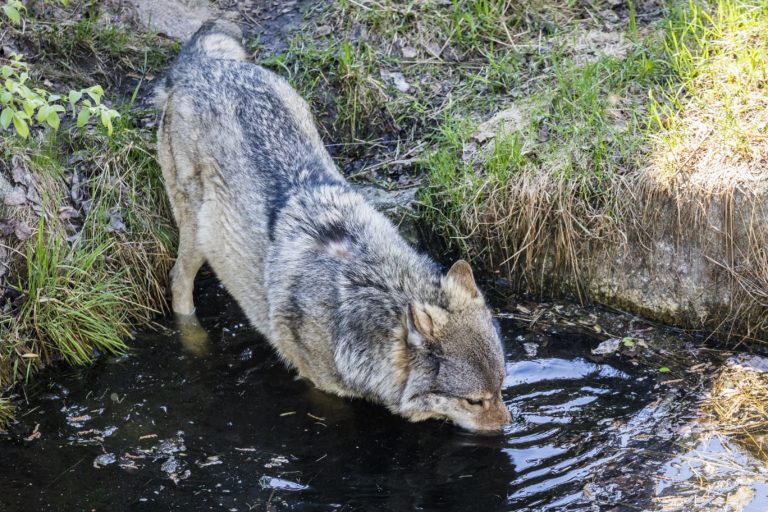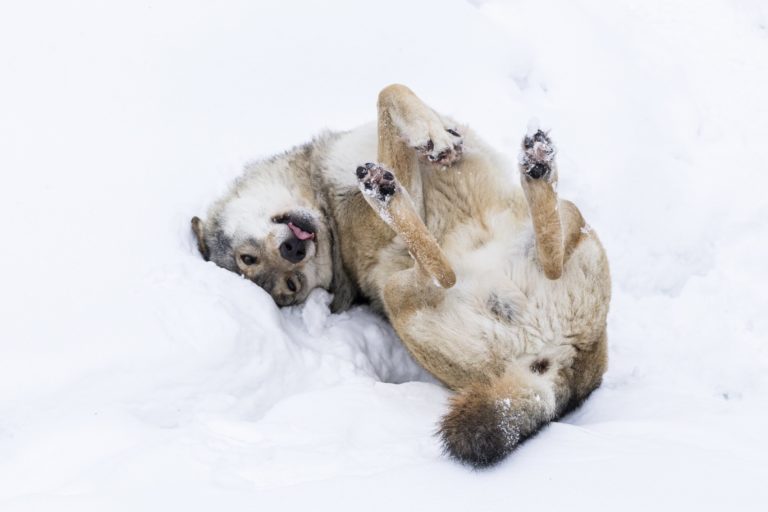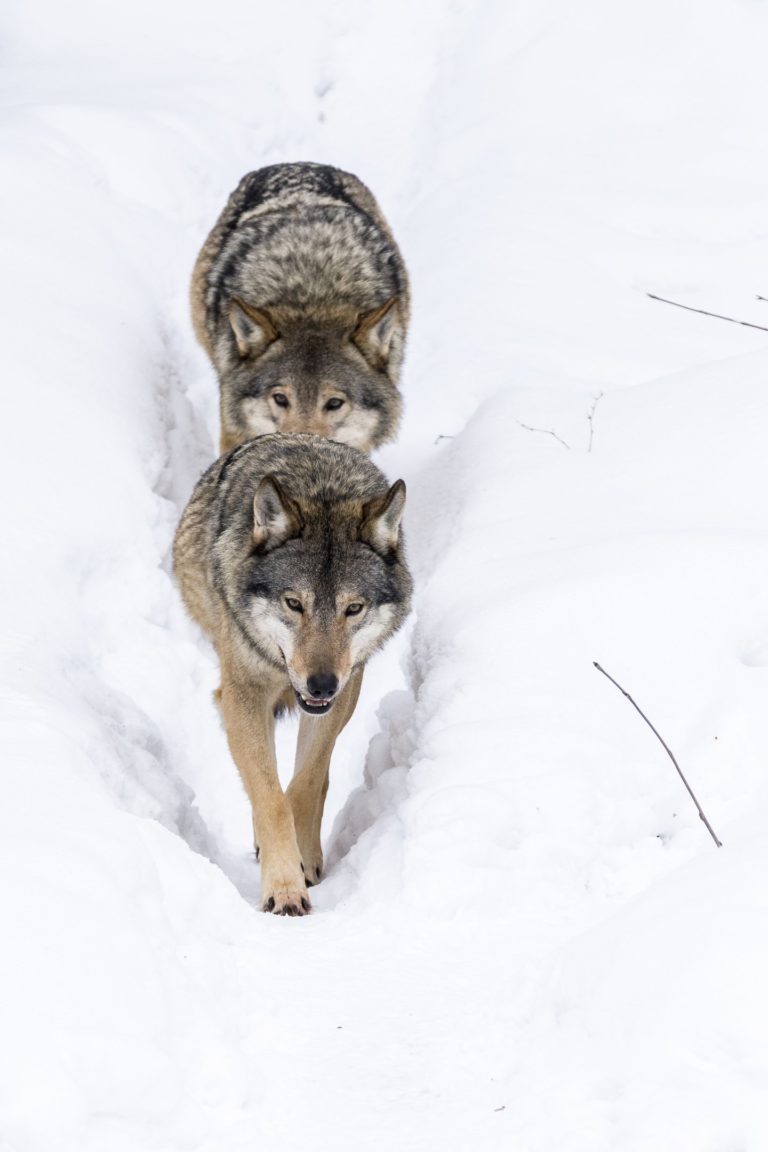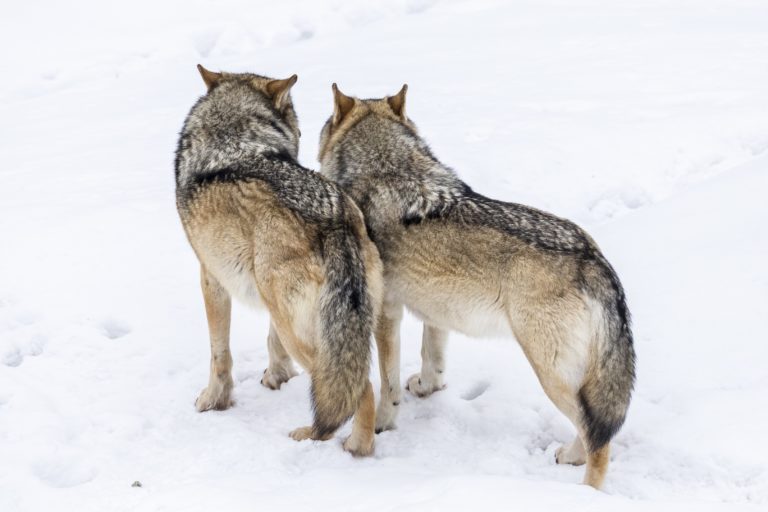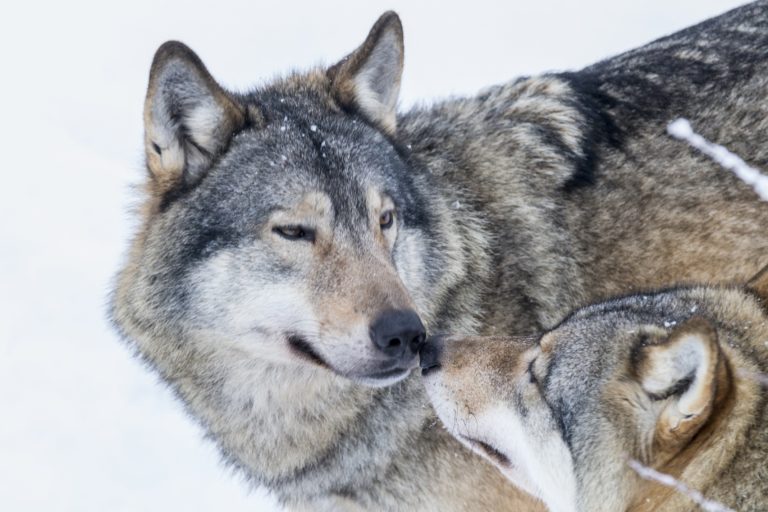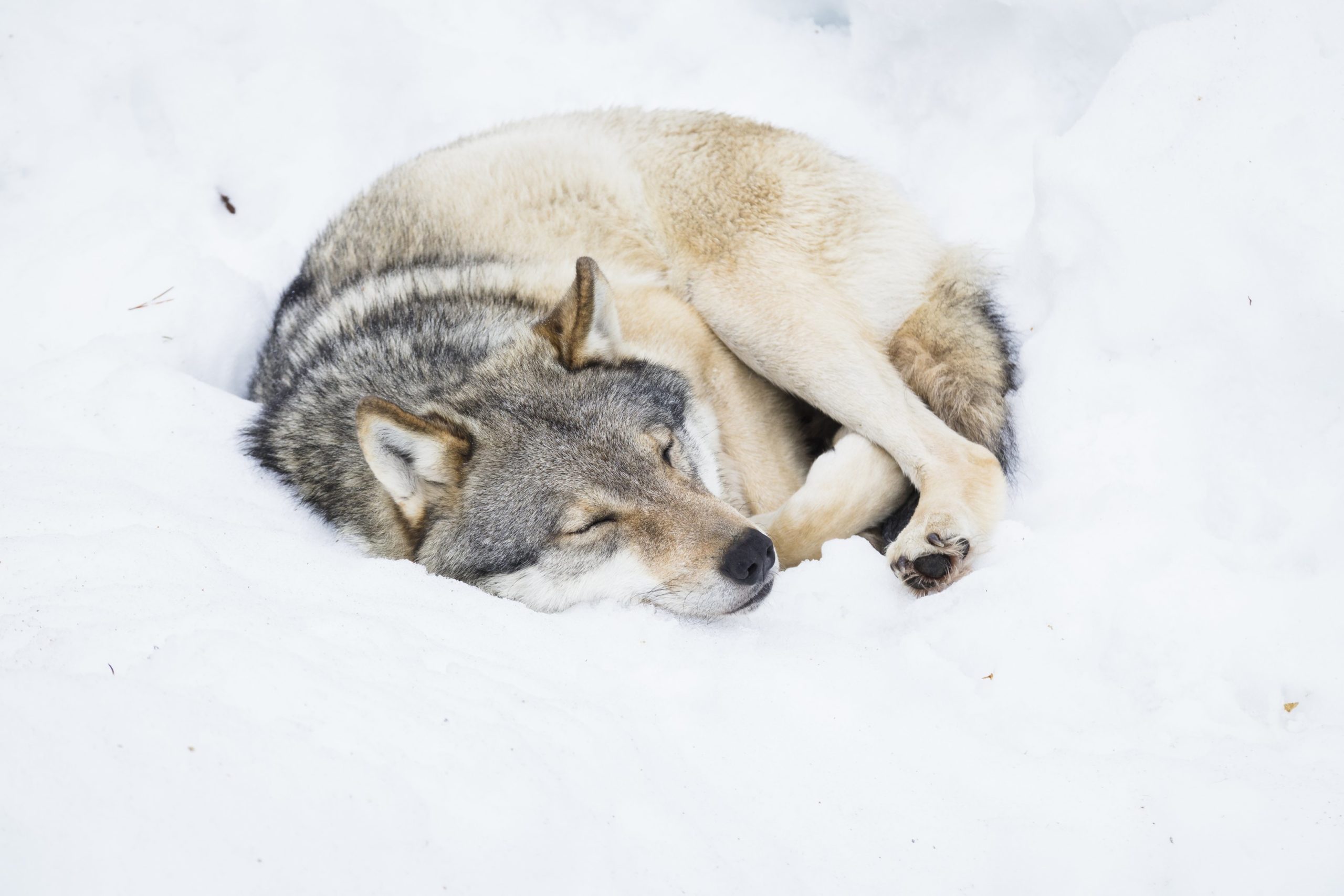
Grey wolf
LIVING HABITS
The grey wolf is a night-active animal, and the most typical way for them to find food is to hunt in packs for moose. A pack of wolves consists of a male and a female and their young offspring. As the family grows, some young ones separate from the pack and start looking for a partner and a suitable habitat. The grey wolf also preys on rabbits and beavers, and eats carrion too. The grey wolf breeds mostly in the eastern parts of Finland, as the wolves wander across the Russian border into the country. The grey wolf can be found throughout Finland nowadays. They live wherever their main source of food, deer, lives. As a timid animal, the wolf appreciates wide, peaceful wilderness, but as humans spread deeper into the woods, the wolves have also had to adapt to the presence of man. Wolves that move near human settlements are most often solitary wolves searching for their territory.
PROTECTION
Grey wolves have been persecuted for the damages they cause to livestock and game animals, and only a few wolves existed in Finland in the 1920’s. Until 1970’s a bounty was paid for killing a wolf. In 1973. the grey wolf became a protected species outside reindeer husbandry districts, and the protective measures were gradually increased; nowadays the game administration may allow special permits for killing otherwise protected wolves to minimize substantial damages. In recent years, the wolf population in Finland has been estimated to be around 300 individuals. After the grey wolf became a protected species, the state started compensating damages caused by wolves. These compensations are one of the ways the co-living of people and large predators can be mitigated. The compensation system has changed over the years. Earlier the reindeer herders were paid compensation only for the reindeers that were found after the wolves killed them. Since it is not possible to locate all lost reindeers, 1,5 times the value of the reindeer is now compensated for every individual found killed by large predators. On top of that, based on mathematical approximations, the state compensates some of the calves that are lost during the summer season. Despite, large predators might still cause substantial economical damages to reindeer herders.
ADAPTING TO WINTER
The grey wolf is active throughout the year. Their thick fur coating keeps them warm, and eating carrion helps with the otherwise scarce nutrition in the winter. Travelling in deep snow the members of the pack step one after the other on the foot trace left by the former one. This way they save energy.
Grey wolf
Canis lupus
Class: Mammalia – Mammals
Order: Carnivora- Carnivores
Family: Canidae – Canines
Size: Weight: 20-55kg, stands at 70-80cm at the withers, male larger than female.
Breeding: Heat: February-March, gestation period: 61-64 days and nights, offspring: 5-6 usually. Young ones leave birth pack in 1-2 years. Females reach sexual maturity in 22 months, males usually later.
Lifespan: 12 -16 years.

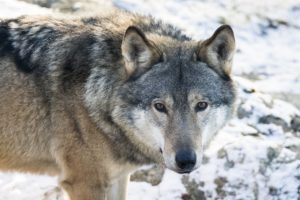
Did you know…
Did you know, that contrary to popular belief, wolves don’t howl more than usual during a full moon? They howl a lot during evenings and at night time in general; howling and using sounds is part of their hunting.





